
Station Name: HIGH LANE[Source: Nick Catford & Paul Wright]
High Lane Station Gallery 1: 1950s - August 1969 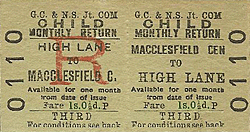 lane_old8.jpg) A Macclesfield Central service is seen departing from High Lane in the early 1950s.
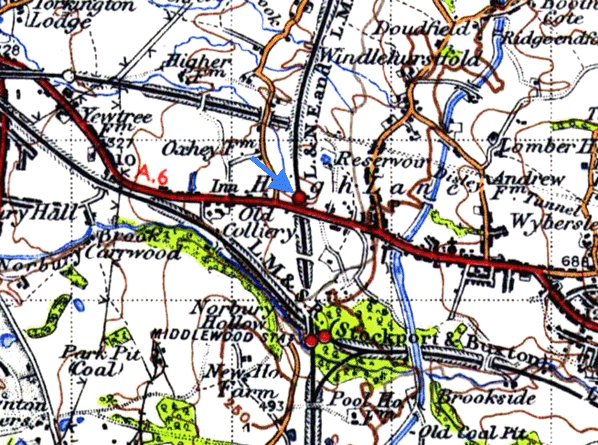 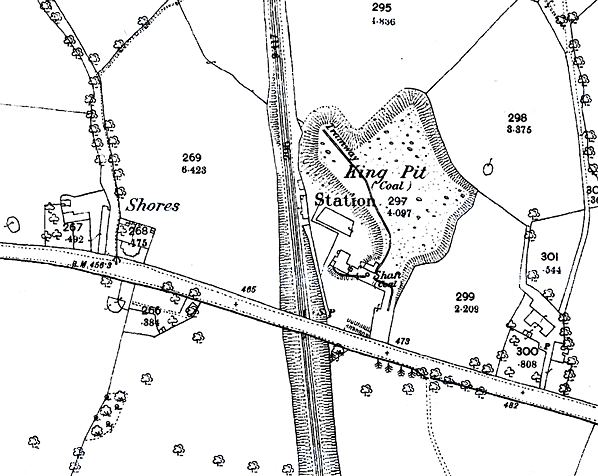 High Lane seen on a 1875 1:2,500 OS map. The line through High Lane was originally single track but was doubled in 1871. This 1875 map shows the double track but there is still only a platform on the up side. The station buildings and ramp down from High Lane are clearly shown.
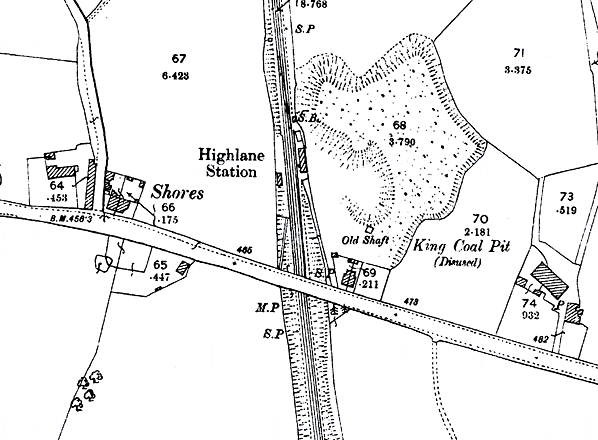
High Lane seen on a 1898 1:2,500 OS map. By 1898 there is an access ramp on the down side and a waiting shelter on the down platform which was provided after the 1870s widening. A signal box has also been built at the north end of the up platform. Neither a goods yard nor sidings were provided at High Lane although parcels and small items were unloaded onto the platforms. Two cottages for railway workers have been built on the north side of High Lane adjacent to the station. King Pit, in the Cheshire coalfield, had closed by this date.
 High Lane shown on a 1930s map. High Lane shown on a 1930s map.lane_old4.jpg) The handiwork of leading porter Jim Noble is seen on the access ramp to the down platform in 1953. Note the ‘EIIR’, presumably intended to celebrate the coronation of Queen Elizabeth II that year.
Photo received from Ray Noble lane_old1.jpg)
Ex GCR locomotive number 67426 is seen at the High Lane up platform working a class B stopping passenger train in the 1950s. The locomotive was built for the GCR at their Gorton works and entered service as No. 47 in November of 1904. It was absorbed into the LNER and renumbered 5047 during September 1924. Renumbered again in October 1946 to 7426, it passed to BR at nationalisation and received the 6 prefix allocated to most LNER locos. It was withdrawn from 39A, Gorton shed during December 1954 and scrapped during January 1955.
Copyright photo by HC Casserley lane_old2.jpg)
The down platform at High Lane station seen from a southbound train in 1954. The distinctive North Staffordshire Railway running-in nameboard will be noted.
Copyright photo by HC Casserley lane_old5.jpg) Leading porter Jim Noble takes delivery of the evening papers c late 1950s. Steam has now given way to DMU operation. A Derby 'Lightweight' 79xxx 2-car unit is seen here. Photo received from Ray Noble lane_old9.jpg)
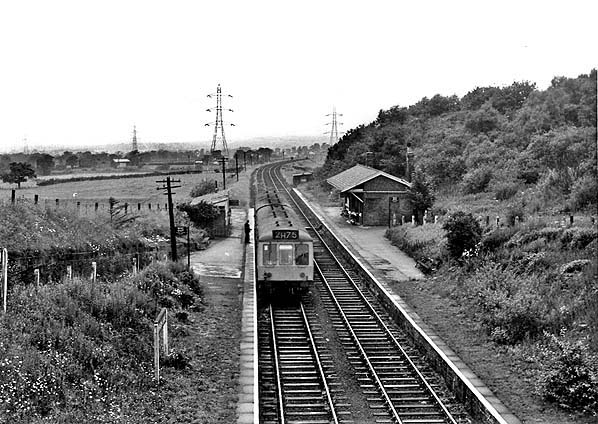
A lone passenger prepares to board a Manchester direction train at High Lane on 12 July 1969.
Photo by Neil Ferguson-Lee from his Flickr photostream 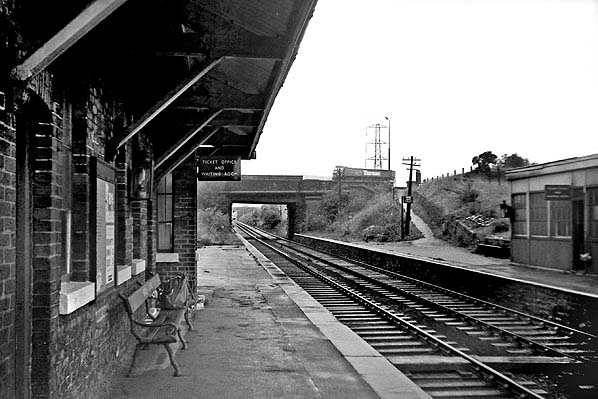 Looking south along the up platform at High Lane station in August 1969.
Photo by Pete Hackney from his Flickr photostream 
A Manchester train is seen at High Lane in August 1969.
Photo by Pete Hackney from his Flickr photostream Click here for High Lane Station Gallery 2:
|
 The station was located on the north side of the Stockport and Buxton Road and took its name from a small settlement half-a-mile away. The line opened as a single track and the platform at High Lane was located on its east side. Access was via a sloping footpath. Facilities were housed within an austere single-storey brick building whose pitched roof extended forward as a platform canopy, supported by a series of unadorned wooden brackets.
The station was located on the north side of the Stockport and Buxton Road and took its name from a small settlement half-a-mile away. The line opened as a single track and the platform at High Lane was located on its east side. Access was via a sloping footpath. Facilities were housed within an austere single-storey brick building whose pitched roof extended forward as a platform canopy, supported by a series of unadorned wooden brackets.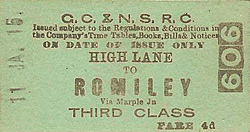 By April 1910 High Lane had nine trains in each direction on Monday-to-Friday and ten on Saturday. In the down direction two trains used Hyde or Woodley as their terminus and the rest ran to Manchester London Road.
By April 1910 High Lane had nine trains in each direction on Monday-to-Friday and ten on Saturday. In the down direction two trains used Hyde or Woodley as their terminus and the rest ran to Manchester London Road. 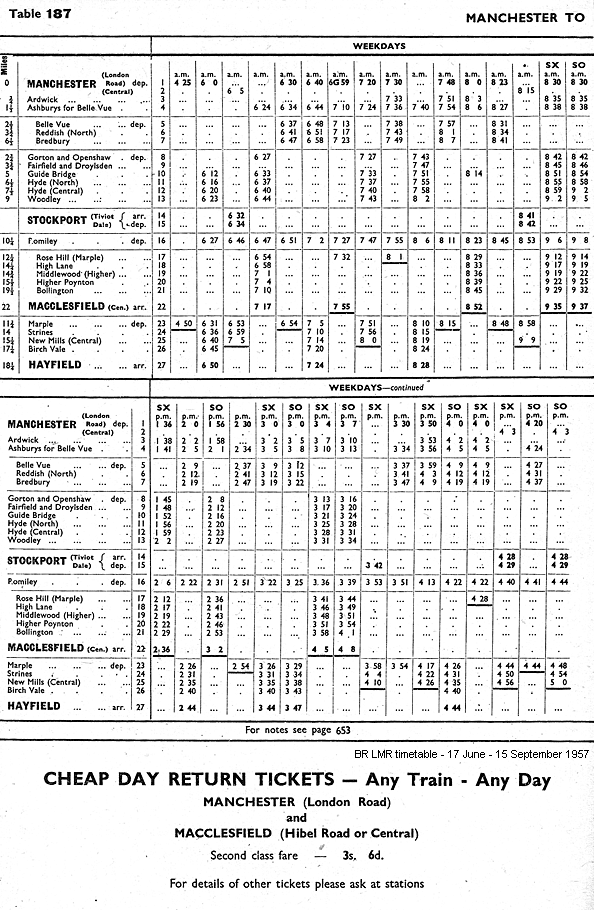
 progressed slowly and it was not until 12 June 1969 that Richard Marsh, Secretary of State for Transport, consented to closure, but reprieved Rose Hill (Marple) station at the northernmost end of the branch, leaving it as the terminus. The last services ran from High Lane on Saturday 3 January 1970 and the station closed completely on 5 January 1970 with the section of line from Rose Hill to Macclesfield. Jim Noble was still the Leading Porter at the time of closure and he served for two more years on the railway before retiring in 1972.
progressed slowly and it was not until 12 June 1969 that Richard Marsh, Secretary of State for Transport, consented to closure, but reprieved Rose Hill (Marple) station at the northernmost end of the branch, leaving it as the terminus. The last services ran from High Lane on Saturday 3 January 1970 and the station closed completely on 5 January 1970 with the section of line from Rose Hill to Macclesfield. Jim Noble was still the Leading Porter at the time of closure and he served for two more years on the railway before retiring in 1972. 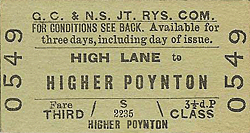


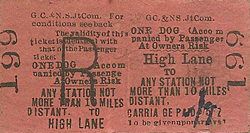

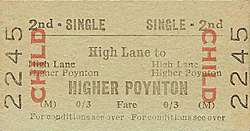

lane_old3.jpg)
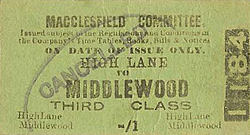

 Home Page
Home Page